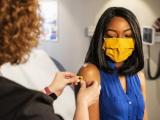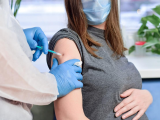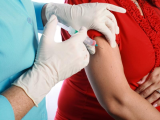Oct 23, 2006 (CIDRAP News) –Warning that the world is billions of doses short of the amount of vaccine needed to prepare for an influenza pandemic, the World Health Organization (WHO) today called for an urgent and coordinated international effort to make up the deficit.
The agency recommended an immediate campaign to boost vaccine production capacity and develop vaccines that would provide broader and more durable protection—while cautioning that such efforts will not bear fruit for another 3 to 5 years.
"We are presently several billion doses short of the amount of pandemic influenza vaccine we would need to protect the global population," Dr. Marie-Paule Kieny, director of the WHO Initiative for Vaccine Research, said in a news release. "This could lead to a public health crisis."
"Importantly, none of the strategies will be able to fill the gap in the immediate short term but, if action is taken now, should bear fruit within a future time frame of three to five years," states the official summary of the WHO's "Global pandemic influenza action plan to increase vaccine supply."The report is the product of a meeting of 120 experts in Geneva in May.
The WHO estimates the cost of the needed initiatives at US $3 billion to $10 billion.
The world's current production capacity for seasonal flu vaccine is estimated at 350 million doses a year, which could perhaps be pushed to 500 million doses with round-the-clock operation (each dose containing 15 micrograms of antigen for each of three flu strains), the report says. Current expansion plans are expected to add another 280 million doses of annual capacity over the next 2 to 3 years, pushing the total to a maximum of 780 million doses.
Under the most optimistic assumptions, if all facilities converted to making a single-strain pandemic flu vaccine, maximum world capacity by 2008 or 2009 would be about 2.34 billion doses, the report says. Given a world population of 6.7 billion, this would fall several billion doses short of the expected demand in a pandemic, it states.
Further, it says that current egg-based production methods don't work nearly as well for H5N1 flu vaccines as they do for seasonal flu vaccines. As a result, the current maximum capacity to make H5N1 vaccine is only about 500 million (single-strain) doses a year. Because each person would probably need two doses, only 250 million people could be fully vaccinated in a year.
The WHO lays out three main steps for closing the vaccine supply gap:
- Increase use of seasonal flu vaccine to stimulate industry to produce more (while protecting more people from seasonal flu)
- Increase vaccine production capacity by improving yields and building new plants
- Increase research to (1) develop better vaccines that provide more protection with fewer doses and (2) produce vaccines faster and more efficiently
The most direct way to improve production capacity is to increase the production yield and immunogenicity of H5N-based vaccines, the report says. The WHO hopes to improve coordination of efforts in this area by "creating a collaborative consortium of laboratories with the objective of developing better candidate prototype vaccine strains."
The plan lists various possibilities for building new vaccine production facilities, including transferring egg-based or cell-culture production to potential new manufacturers and partially converting veterinary vaccine production facilities to produce human flu vaccines.
The report says various strategies may help increase production yields. Several candidate vaccines containing adjuvants—chemicals that stimulate the immune system—will be tested over the next 2 years, but funding will be needed to accelerate the systematic evaluation of the formulations under development, the WHO says.
The agency also calls for more research on live attenuated flu vaccines, saying they may be more effective than inactivated vaccines, cost less to produce, and have higher yields. The plan also advocates further assessment of killed, whole-virus vaccines and of administering vaccines intradermally rather than intramuscularly.
The WHO estimates the cost of all the strategies for boosting vaccine yields and production capacity at anywhere from $2 billion to $9 billion.
Concerning the quest for better vaccines, the report says the ideal vaccine is one that is safe and effective in all target groups with a single dose, is easily produced on a large scale, is thermostable, provides protection for at least a year, and protects against "antigenically drifted" flu strains.
The report recommends a number of approaches for developing better vaccines:
- Evaluate new adjuvants
- Assess the molecular basis for the immunogenicity of hemagglutinin, one of the two surface proteins on flu viruses
- Develop new-generation vaccines, such as ones that target viral proteins other than hemagglutinin
- Determine the potential benefits of giving a pre-pandemic vaccine to prime the immune system to respond to later vaccination with a pandemic vaccine.
The plan also advocates standardizing protocols for evaluating new vaccine candidates and defining immune responses in lab animals that correlate with protection in humans.
See also:
Oct 23 WHO news release
http://www.who.int/mediacentre/news/releases/2006/pr58/en/index.html
WHO report
http://www.who.int/csr/resources/publications/influenza/CDS_EPR_GIP_2006_1.pdf



















